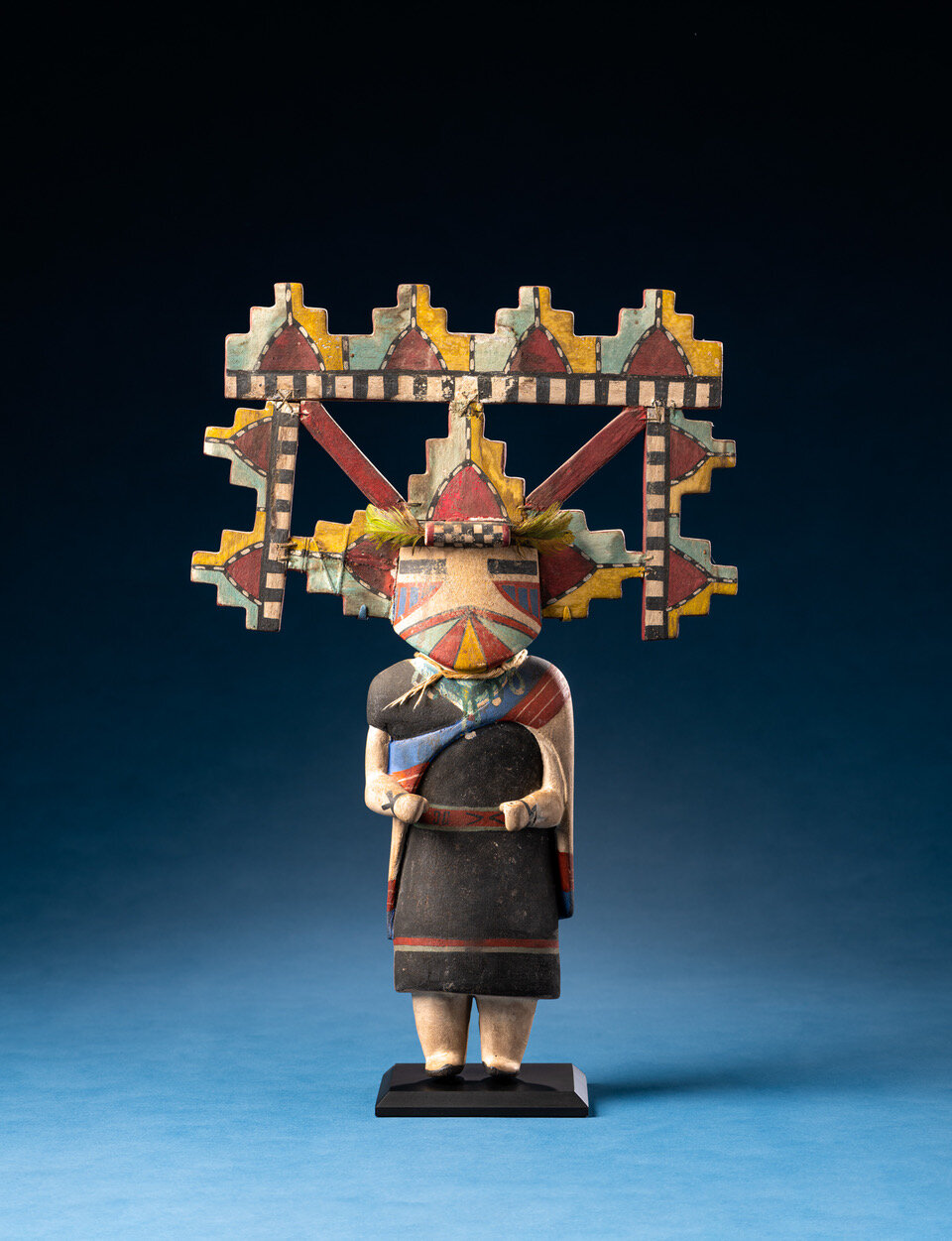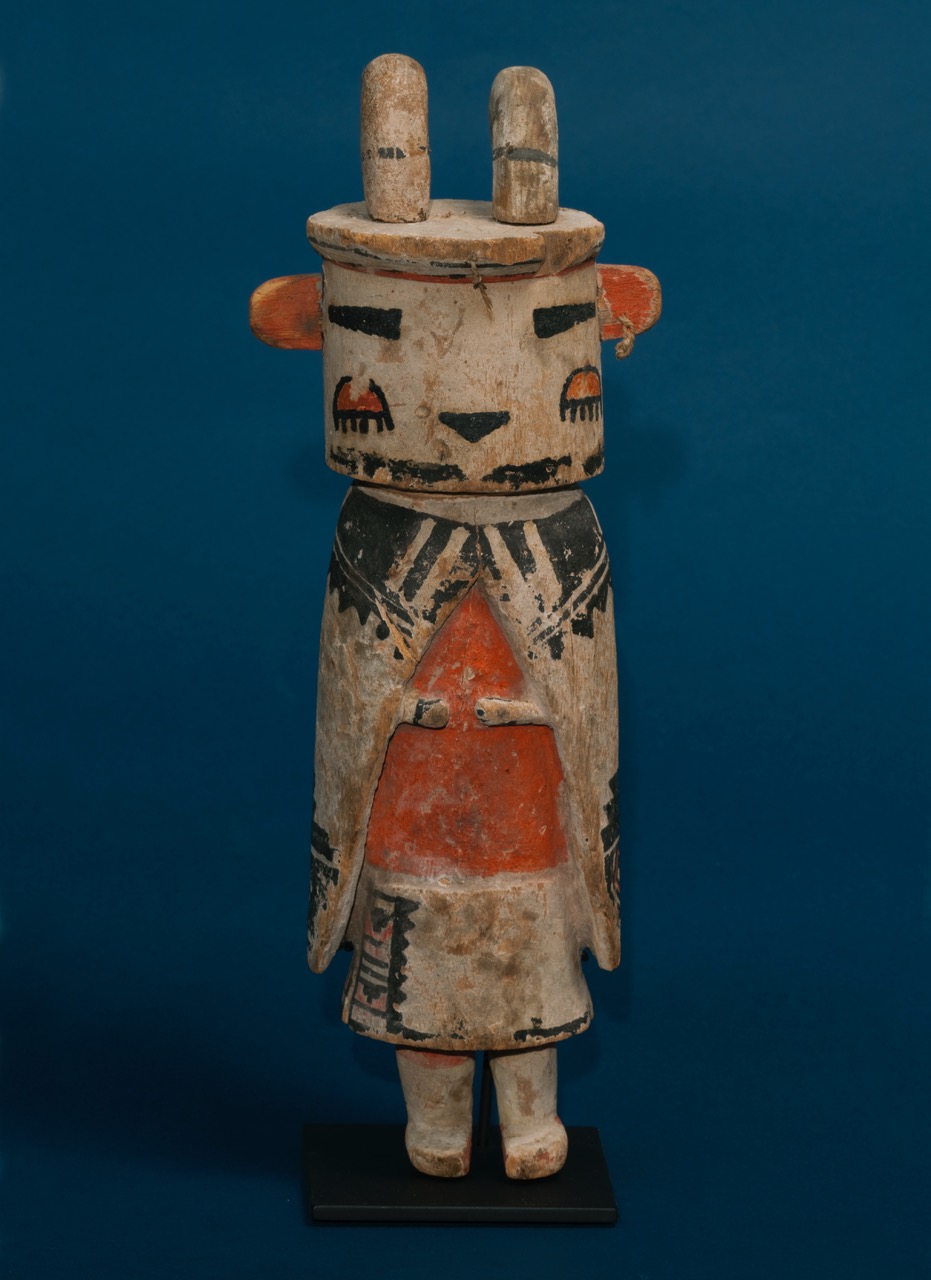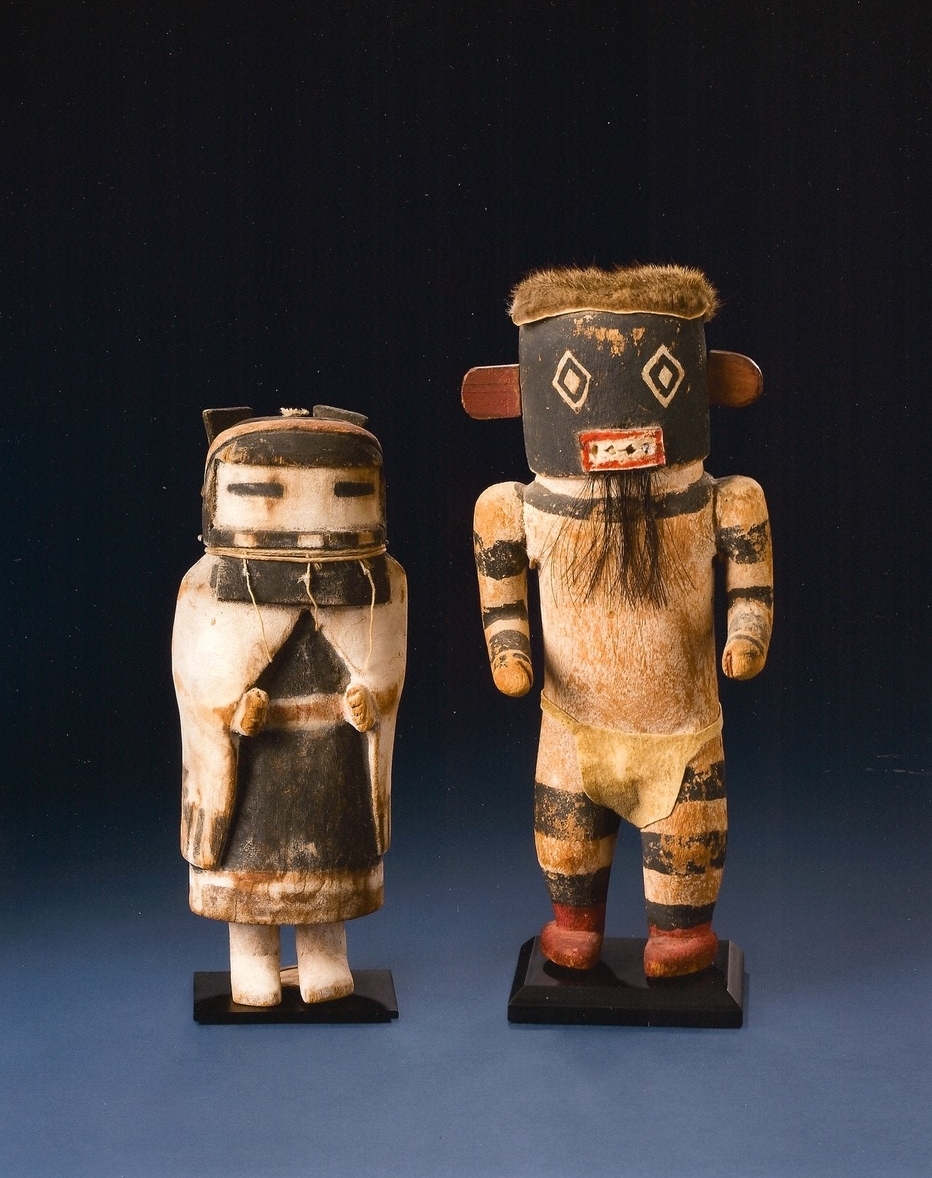Kachinas

Kachina dolls or “tihus” as they are called by the Hopi, are carved and painted by men from cottonwood root. They were originally given to children and young women as toys and to instruct them about the Kachina cult. They represent masked, ancestral supernatural spirits. Kachinas are associated with moisture, which is the key to life in the arid southwest, protection, and instruction on how to live a good life.
While the tradition of the kachina cult dates back to the 14th century, the carving of the dolls is difficult to pin down. By the late 19th century, the production of carved dolls was well under way with the majority being made as curios for non-Native consumption.
Kachina dolls were collected by many artists of the Modern Art movement, such as the Surrealist, Max Ernst. More than almost any other art form, kachina dolls capture the realm of the supernatural. With elaborate masks and costumes combined with their static poses and stares, they transcend time, place and culture.















